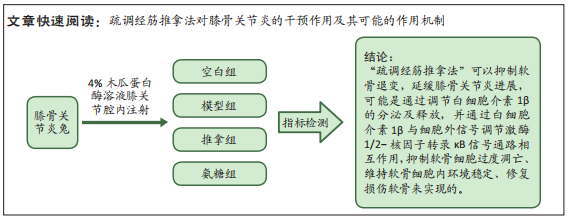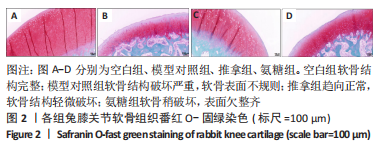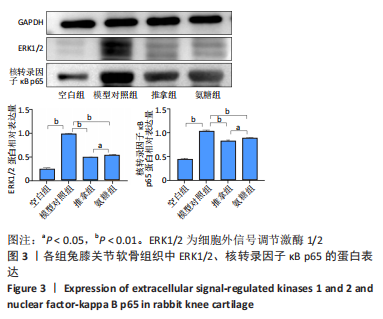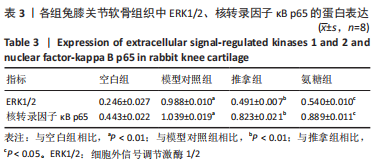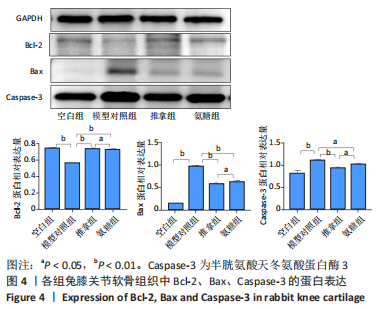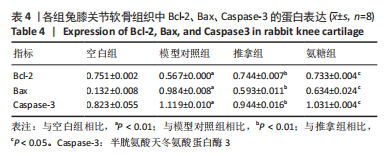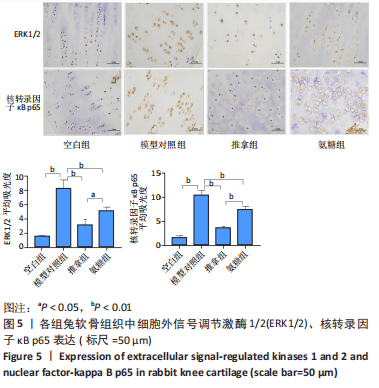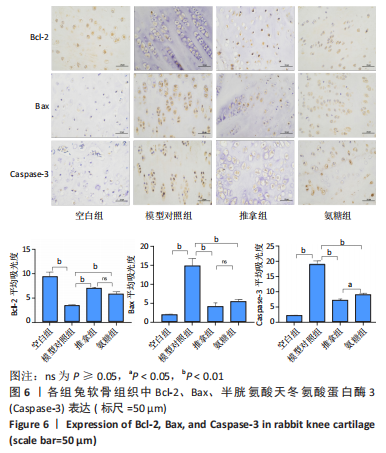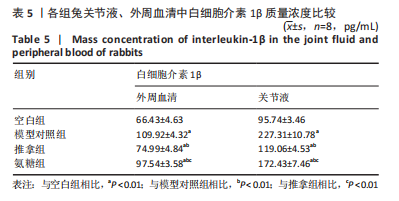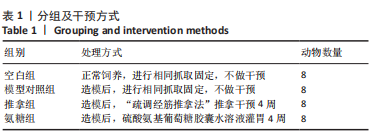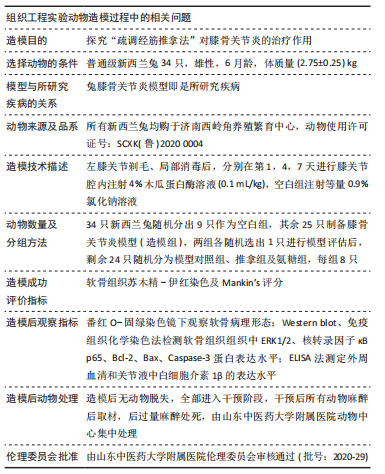[1] 黎丹东,李琳琳,苏峰,等.膝骨关节炎与性别和年龄的相关性研究[J].临床医学研究与实践,2019,4(31):1-3+8.
[2] 张洪美.膝骨关节炎的规范诊治与阶梯治疗[J].中国骨伤,2019, 32(5):391-395.
[3] 中华医学会骨科学分会关节外科学组.骨关节炎诊疗指南(2018年版)[J].中华骨科杂志,2018,38(12):705-715.
[4] CHEN P,HUANG L,MA Y, et al. Intra-articular platelet- rich plasma injection for knee osteoarthritis: a summary of meta-analyses. J Orthop Surg Res. 2019;14(1):385-396.
[5] D’APUZZO M,WESTRICH G,HIDAKA C, et al. All-cause versus complication-specific readmission following total knee arthroplasty. J Bone Joint Surg Am. 2017;99(13):1093-1103.
[6] BANNURU RR, OSANI MC, VAYSBROT EE, et al. OARSI guidelines for the non-surgical management of knee,hip,andpolyarticular osteoarthritis. Osteoarthr Cartil. 2019;27(11):1578.
[7] 陈卫衡.膝骨关节炎中医诊疗指南(2020年版)[J].中医正骨,2020, 32(10):1-14.
[8] 王锴,董雪,林剑浩.影响膝关节骨关节炎患者生活质量预后因素的队列研究[J].中华骨科杂志,2019,39(18):1149-1156.
[9] 廖建钊,章晓云,张璇,等.骨性关节炎发生发展中的分子信号通路[J].中国组织工程研究,2020,24(21):3394-3400.
[10] ZHANG FJ, YU WB, LUO W, et al. Effect of osteopontin on TIMP-1 and TIMP-2 mRNA in chondrocytes of human knee osteoarthritis in vitro. Exp Ther Med. 2014;8(2):391-394.
[11] 杨永菊,张师侥,关雪峰.膝骨关节炎治疗最新进展[J].世界中西医结合杂志,2018,13(4):589-592.
[12] 吴佳航. 基于“筋为骨用”理论研究“舒筋”手法促进膝关节骨性关节炎软骨修复的作用机制[D].成都:成都中医药大学,2018.
[13] 周洲,吴宪宗.对推拿镇痛作用的生理机制初探[J].按摩与导引, 1993(2):13-15.
[14] MURTON AJ, GREENHAFF PL. Resistance exercise and the mechanisms of muscle mass regulation in humans: acute effects on muscle protein turnover and the gaps in our understanding of chronic resistance exercise training adaptation. Int J Biochem Cell Biol. 2013;6:5-17.
[15] BOTERO JP, SHIGUEMOTO GE, PRESTES J, et al. Effects of long-term periodized resistance training on body composition, leptin, resistin and muscle strength in elderly post-menopausal women. J Sports Med Phys Fitness. 2013;53(3):289-294.
[16] KARDOS D, MARSCHALL B, SIMON M, et al. Investigation of Cytokine Changes in Osteoarthritic Knee Joint Tissues in Response to Hyperacute Serum Treatment. Cells. 2019;8(8):824.
[17] ARRA M, SWARNKAR G, KE K, et al. LDHA-mediated ROS generation in chondrocytes is a potential therapeutic target for osteoarthritis. Nat Commun. 2020;11(1):3427.
[18] WANG D, WANG Z, LI M, et al. The underlying mechanism of partial anterior cruciate ligament injuries to the meniscus degeneration of knee joint in rabbit models. J Orthop Surg Res. 2020;15(1):428.
[19] LAN CN, CAI WJ, SHI J, et al. MAPK inhibitors protect against earlystage osteoarthritis by activating autophagy. Mol Med Rep. 2021;24(6):829.
[20] CHEN YY, YAN XJ, JIANG XH, et al. Vicenin 3 ameliorates ECM degradation by regulating the MAPK pathway in SW1353 chondrocytes. Exp Ther Med. 2021;22(6):1461.
[21] CHOW YY, CHIN KY. The role of inflammation in the pathogenesis of osteoarthritis. Mediators Inflamm. 2020;2020:8293921.
[22] 高世超,殷海波,刘宏潇,等.MAPK信号通路在骨关节炎发病机制中的研究进展[J].中国骨伤,2014,27(5):441-444.
[23] MA N, TENG X, ZHENG Q, et al. The regulatory mechanism of p38/MAPK in the chondrogenic differentiation from bone marrow mesenchymal stem cells. J Orthop Surg Res. 2019;14(1):434.
[24] RIGOGLOU S, PAPAVASSILIOU AG. The NF-kB signalling pathway in osteoarthritis. Int J Biochem Cell Biol . 2013;45(11):2580-2584.
[25] SCOTECE M,CONDE J,ABELLA V, et al. Oleocanthal inhib- its catabolic and inflammatory mediators in LPS-activated human primary osteoarthritis(OA) chondrocytes through MAPKs/NF-kappaB pathways. Cell Physiol Biochem. 2018;49(6):2414-2426.
[26] ZHONG JH, LI J, LIU CF, et al. Effects of microRNA-146a on the proliferation and apoptosis of human osteoarthritis chondrocytes by targeting TRAF6 through the NF-κB signalling pathway. Biosc Rep. 2017;37(2):1-10.
[27] MARCY KB, OTERO M, OLIVOTTO E, et al. NF-kappaB signaling: multiple angles to target OA. Curr Drug Targets. 2010;11(5):599-613.
[28] YAN HQ, ZHANG D, SHI YY, et al. Ataxia-telangiectasia mutated activation mediates tumor necrosis factor-alpha induced MMP-13 up-regulation and metastasis in lung cancer cells. Oncotarget. 2016;7(38): 62070-62083.
[29] 李红波,苏磊,林新峰,等.HSP27在热打击致F98细胞氧化应激损伤及细胞凋亡中的作用[J].解放军医学杂志,2018,43(10):854-859.
[30] SUN ZY, YIN ZM, LIU C, et al. IL-1β promotes ADAMTS enzyme-mediated aggrecan degradation through NF-κB in human intervertebral disc. J Orthop Surg Res. 2015;10(1):159.
[31] TU J, LI WT, ZHANG YK, et al. Simvastatin in hibits IL-1β-induced apoptosis and extracellular matrix degradation by suppressing the NF-kB and MAPK path- ways in nucleus pulposus cells. Inflammation. 2017;40(3):725-734.
[32] LIU F, LI L, LU W, et al. Scutellarin ameliorates cartilage degeneration in osteoarthritis by inhibiting the Wnt/β-catenin and MAPK signaling pathways. Int Immunopharmacol. 2020;78:105954.
[33] WALENSKY LD. Targeting BAX to drug death directly. Nat Chem Biol. 2019;15(7):657-665.
|
